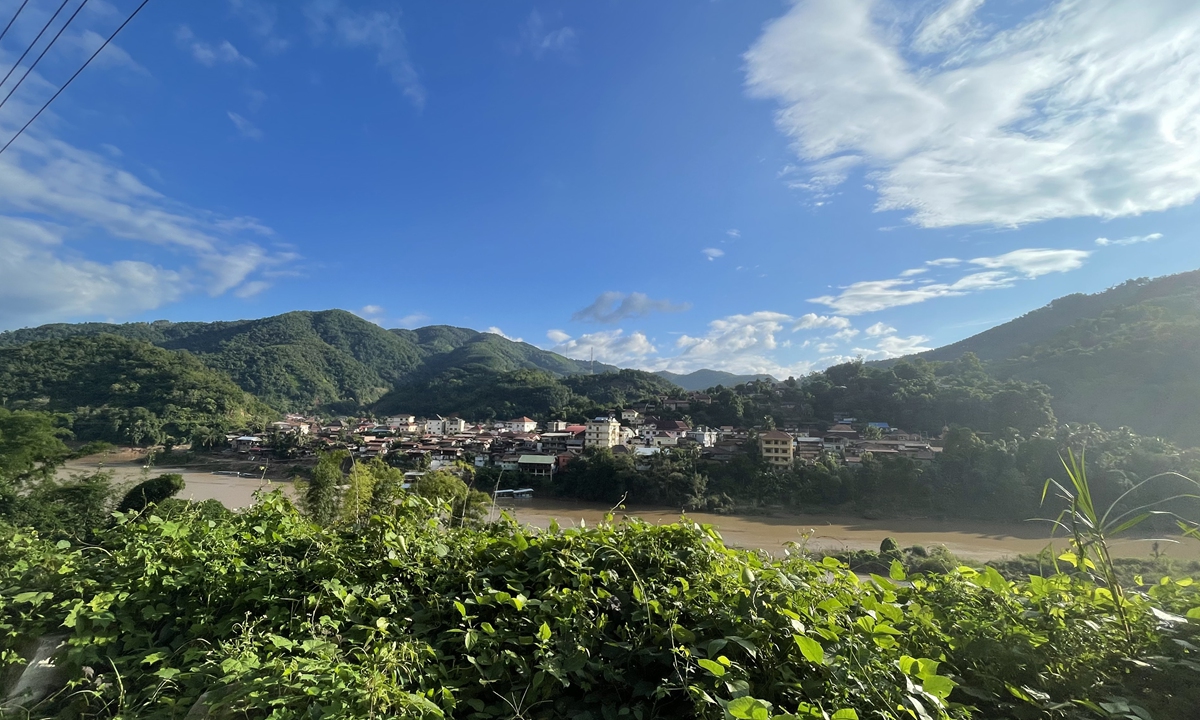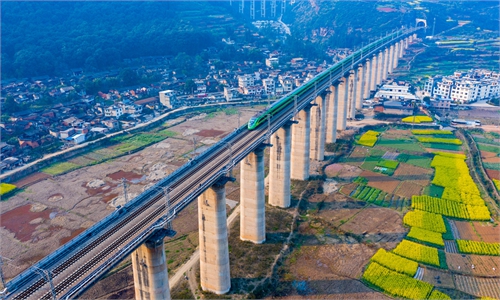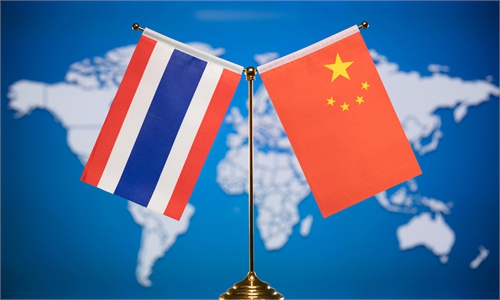
Photo: Courtesy of PowerChina
China-Laos energy cooperation has brought new development opportunities to remote villages in the Southeast Asian nation's mountainous regions, assisting the hydropower-rich nation to leverage its water resource and boost electricity export, business representatives said on Tuesday.
The comments came as Thongloun Sisoulith, general secretary of the Lao People's Revolutionary Party Central Committee and Lao president, kicked off a state visit to China.
Observers said that Chinese investment, which accounts for roughly 70 percent of that going into Lao hydropower plants, is a vivid display of how the two countries have fostered cooperation under the Belt and Road Initiative (BRI) and the Lancang-Mekong Cooperation mechanism, with Sisoulith's visit set to inject new momentum into bilateral economic ties and bring the fruitful partnership to a new height.
In November, Power Construction Corp of China (PowerChina) signed a contract with a Lao company to construct a 600-megawatt (MW) wind power plant in southern Laos, PowerChina said in a statement sent to the Global Times on Tuesday.
It is the first wind power project in Laos, and it will export electricity to Vietnam, the first time that Laos will engage in cross-border transmission of green and renewable electricity.
The PowerChina deal offers a clue into the role Chinese companies have played in aiding Laos, which sits at the mainstream of the Mekong River and aims to harness this edge to make itself the "battery of Southeast Asia," to tap its 26,000 MW hydropower potential.
Last year, Lao hydropower plants generated 8,349 MW of electricity, accounting for one-third of the potential capacity, according to the International Renewable Energy Agency.
In September 2021, another landmark BRI project — the Nam Ou River hydropower station, developed by PowerChina — was connected to the grid. The project has a total capacity of 1.272 million kilowatts and an average annual generating capacity of 5 billion kilowatt-hours. It includes seven cascade hydropower plants along the Nam Ou River, which is the largest tributary of the Mekong River in Laos.
The construction plan is the most reasonable one, as it eliminates the number of local residents who need to be relocated and the impact on the environment, PowerChina said. The Chinese company has also helped build bridges and roads, upgrading basic infrastructure in local villages, to support local livelihood.
At the national level, the combined investment by PowerChina accounts for over 12 percent of Laos' total electricity supply, and its electricity capacity represents 30 percent of the country's total in the dry season, according to media reports. One industry insider told the Global Times that Chinese investment accounts for about 70 percent of Lao hydropower capacity.
"Laos is catching up in exploring hydropower resources, but shortages in transmission lines and distribution systems are still acute, which blunts its capacity to increase electricity exports. Chinese companies have been helping with this," the insider said.
Electricity export has become an important driver of the Lao economy. According to media reports, electricity has contributed to over 10 percent of GDP and 30 percent of its export volume for many years. The main export destinations are Southeast Asian countries such as Thailand, Vietnam, Cambodia and Singapore.
In March 2021, a joint venture formed by the China Southern Power Grid Co and Laos National Power Co signed a franchise agreement with the Lao government, and the JV is responsible for financing, building and constructing a 230-kilowatt power grid as well as cross-border electricity networks with its neighboring countries.
Zhou Rong, a senior researcher at the Chongyang Institute for Financial Studies at Renmin University of China, told the Global Times that Chinese BRI investments have helped Laos to build up its basic infrastructure, create jobs and support industries, paving the way for a fast-track modernization and globalization process.
"China-Laos energy cooperation plays an exemplary role in showcasing the palpable benefits brought by the BRI in Southeast Asia. With Sisoulith's visit, the two countries' economic cooperation is on a trajectory to further consolidation and elevation," Zhou said.



